CHAPTER 2 class 6 ncert - Summary
FROM HUNTING–GATHERING TO GROWING FOOD
 |
please support our efforts, scan to pay/कृपया हमारे प्रयासों का समर्थन करें, भुगतान करने के लिए स्कैन करें|
|
Important terms used in this chapter
इस चैप्टर में कुछ मुख्य terms है
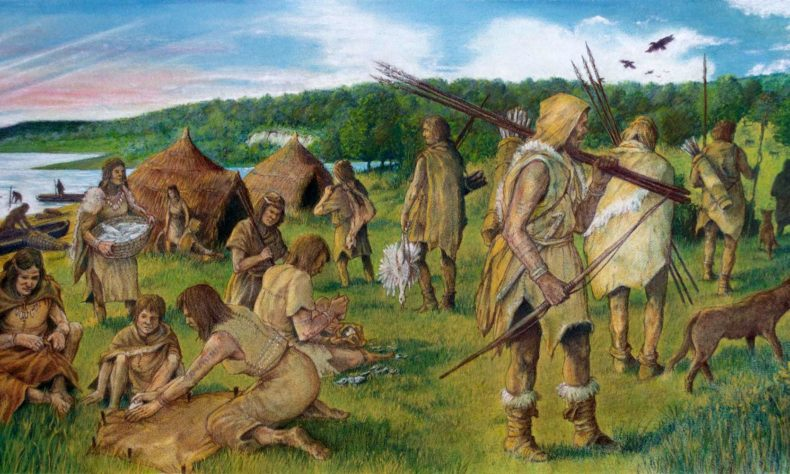
Hunter-gatherers -
We call - Hunter-gatherers to those our ancestors who used to hunt or gather vegetables and fruits and travel from one place to another in search of food.

•••••••••••••••••••••••
Archaeologists - That is, those people who keep researching about old people or about history.


•••••••••••••••••••••••
Palaeolithic Age ( Stone Age )- पलाइयॉलिथिक -

Those years when man used to make his hunting tools etc. from stone and so were not very much developed. It is said to be the oldest people. It is said to be the centuries between 20 lakh years ago to 12000 years ago.
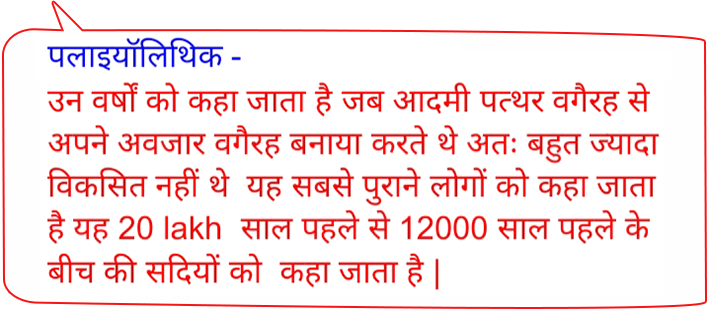
Mesolithic (middle stone). -

It is called those years that were after the Paleolithic. In these years climate change etc. had started. The stones that were found in these years were very small, which are called microliths.
These small stones were combined with bone or wood to make their weapons such as saws and sickles.
About 12,000 years ago to about 10,000 years ago is called the Mesolithic.




____________________
Summary
We call people from 20000 years ago as hunt-gathers - because these people used to collect their food like grains, fruits and they also used to hunt and they used to move from one place to another in search of food and prey.
हम 20000 साल पहले के लोगों को hunt-gathers कहते हैं - क्योंकि यह लोग अपना खाना इकट्ठा करते थे जैसे अनाज , फल , फ्रूट तथा यह शिकार भी करते थे और यह खाने और शिकार की तलाश में एक जगह से दूसरी जगह जाते थे |


Hunt-Gathers एक स्थान से दूसरे स्थान जाने के कारण हो सकते हैं जैसे कि
Hunt-Gathers moved from one place to another had many causes such as -
■The place where he lived, their food grains, fruits or animal were over, then they started going to other places in search of food.
■ जिस स्थान पर वे रहे हो वहां पर उनका भोजन अनाज फल या मांस खत्म हो गया हो तो वह भोजन की तलाश में दूसरे स्थान जाने लगे |

■The other reason could be , as animals keep going from one place to another, so the ones who used to hunt, then they also started going from other places in search of animals.
■ दूसरा कारण हो सकता है जैसे जानवर एक स्थान से दूसरे स्थान जाते रहते हैं , तो वह जो शिकार करते थे तो वह भी जानवरों की तलाश में दूसरे स्थानों से जाने लगे |

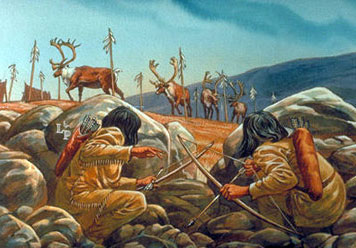
 |
please support our efforts, scan to pay/कृपया हमारे प्रयासों का समर्थन करें, भुगतान करने के लिए स्कैन करें|
|
There could be a third reason like - fruit trees give fruits in the season, so people used to go to other places in search of fruit trees and plants according to the season.
■ तीसरा कारण हो सकता है - फलदार पेड़ पौधे सीजन में फल देते हैं , तो लोग सीजन के हिसाब से फलदार पेड़ और पौधे की तलाश मैं दूसरे स्थान जाते थे |


The fourth reason for moving from one place to another could be water.
Although many rivers and ponds are filled with water throughout the season, but some rivers or ponds sometimes do not provide water in every season, as in some, snow freezes in the cold and in some it dries up in the summer.
So those who lived near him had to move to another place.
■ चौथा कारण एक स्थान से दूसरे स्थान जाने का हो सकता था पानी |
वैसे तो बहुत सी नदी और तालाब पूरे मौसम पानी से भरे रहते हैं लेकिन कुछ नदी या तालाब कभी-कभी हर मौसम में पानी नहीं देते जैसे कुछ में तो ठंडी में बर्फ जम जाती है और कुछ में गर्मी में सूख जाता है |
तो जो लोग उनके आस-पास रहते थे , उन्हें दूसरे स्थान पर जाना पड़ जाता था |


So we got to know why people used to move from one place to another in olden times.
तो हमें यह पता चला कि पुराने समय में लोग एक स्थान से दूसरे स्थान क्यों जाते थे
▪▪▪▪▪▪▪▪▪▪▪▪▪▪▪▪▪▪▪▪▪▪▪▪▪▪▪▪▪▪▪▪▪▪▪▪▪▪▪▪▪▪▪▪▪▪▪▪▪▪▪▪▪▪▪▪▪▪▪▪▪▪▪▪▪▪▪▪▪▪▪▪▪▪▪▪▪▪▪▪▪▪▪▪▪▪▪▪▪▪▪
How do we know all these things about these people
हमें कैसे इन लोगों के बारे में यह सब बातें पता चलता है

यह पता चलता है - हमारे Archaeologists ने जो खोजे की है
It came to know from - what our archaeologists have discovered.

At that time the tools that those people had made from stones, wood and bones were discovered.
उस समय जो उन लोगों ने पत्थरों , लकड़ियों , तथा हड्डियों से जो अवजार बनाए थे वह खोज में प्राप्त हुए|
There were some such stone weapons made by them, which were used to cut flesh or bone, remove the bark of trees or thorn fruits or roots.
उनके द्वारा बनाए हुए कुछ ऐसे पत्थर के हथियार थे जिनका उपयोग - मांस या हड्डी को काटना , पेड़ों की छाल निकालना या फिर फलो या जड़ों को कांटा करते थे |

And some used to make weapons by trapping stones on bone or wood.
और कुछ पत्थरों को हड्डी या लकड़ी पर फंसा कर उसे हथियार बनाते थे |

And some used the stones to cut the wood which should be burnt in the fire.
और कुछ पत्थरों को लकड़ी चीरने के लिए इस्तेमाल करते थे जिसे आग में जलाया जाए |
And the wood was also used for making houses and weapons.
और लकड़ी का इस्तेमाल - घर और हथियार बनाने के लिए भी यूज़ होता था |
●●●●●●●●●●●●●●●●●●●●●●●●●●●●●●●●●●●●●●●●●●●●●●●●●●●●
Choosing a place to live in
वह कैसे अपनी रहने की जगह तय करते थे

As stone tools were very important at that time, then those people preferred to live in such a place where very good stones could be available to them.
जैसे कि उस समय पत्थर के औजार बहुत मुख्य हुआ करते थे तो वह लोग ऐसी जगह रहना पसंद करते थे जहां पर बहुत अच्छे पत्थर उनको उपलब्ध हो सके |
And these place used to be on the banks of rivers or near lakes.
और यह जगह नदियों के किनारे य झीलों के पास हुआ करते थे |
 |
please support our efforts, scan to pay/कृपया हमारे प्रयासों का समर्थन करें, भुगतान करने के लिए स्कैन करें|
|
••••••••••••••••••••••••••••••••••••••••••••••••••••••••••••••••••••••••••••••••••••••••
क्या वह आग का यूज करते थे

Finding out about fire
आग के उपयोग के बारे में जानकारी

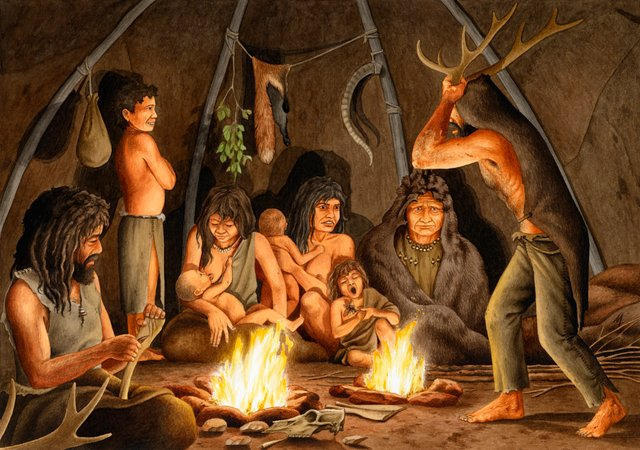
The information about this is found in the caves of Kurnool like ashes.
इसकी जानकारी करनूल की गुफाओं में मिली वस्तुएं जैसे राख पता चलता है |
They used fire to light, to drive away animals, to cook meat.
वह आग का उपयोग उजाला करने के लिए , जानवरों को भगाने के लिए , मांस को पकाने के लिए करते थे |
•••••••••••••••••••••••••••••••••••••••••••••••••••••••••••••••••••••••••••••••••••••••••••••••••••••••••
A changing Environment
एक बदलते परिवेश
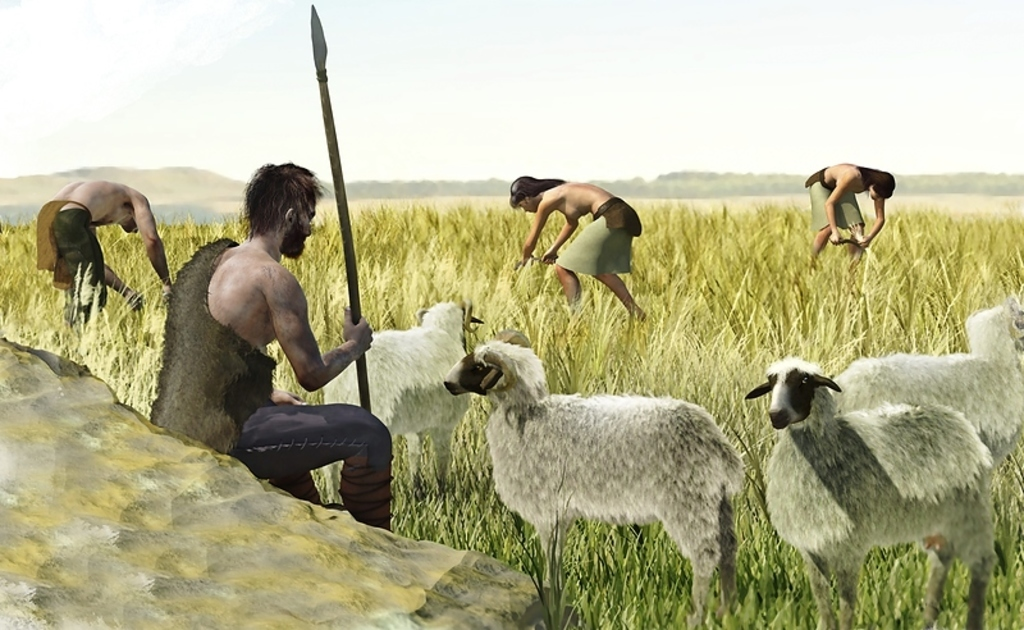
About 12,000 years ago, there was a lot of change in the weather at that time because earlier it used to be more hot, now it was becoming more green due to which more grass and trees started growing.
करीबन 12,000 years ago , उस समय के मौसम में काफी परिवर्तन आया क्योंकि पहले गर्म ज्यादा हुआ करता था अब वह ज्यादा हरा भरा होने लगा था जिसके कारण अधिक घास और पेड़ पौधे उगने लगे थे |
As a result, the number of grass-eating animals like sheep, goats, cattle started increasing due to which they started rearing them and also started grazing.
इसका परिणाम यह हुआ कि घास खाने वाले जानवर जैसे भेड़ , बकरी , कैटल्स की संख्या अधिक बढ़ने लगी जिसके कारण वह उन्हें पालने लगे और चराने भी लगे |
••••••••••••
The beginning of farming and herding and from where we get information about it.
अब जानते हैं की खेती कैसे शुरू हुई और उसके बारे में कहां से इंफॉर्मेशन हमें मिलती है |
When climate change occurred 12,000 years ago, some cereal plants, such as wheat and rice, grew on their own.
जब 12,000 years ago , जलवायु परिवर्तन हुआ तभी कुछ अनाज वाले पौधे , जैसे गेहूं जो और चावल अपने आप उग आए |

Men, women and children all started collecting these and using them for their food and at the same time they started growing them.
In this way he started farming.
आदमी औरत और बच्चे सभी इन को इकट्ठा करने लगे और अपने खाने के इस्तेमाल करने लगे और साथ ही वह उन्हें उगाने भी लगे |
इस तरह से वह किसानी करने लगे |
At that time man and children started wooing the animals by eating something in which the dog is considered to be the first and at the same time other animals like sheep, goat etc. started feeding and rearing them and also started saving them from wild animals.
साथी उस समय आदमी बच्चे कुछ खाने से जानवरों को लुभाने लगे जिसमें कुत्ता सबसे पहले माना जाता है और साथ ही अन्य जानवर जैसे भेड़ बकरी आदि को भी खाना देने लगे और पालने लगे और जंगली जानवरों से उनको बचाने भी लगे |
▪▪▪▪▪▪▪▪▪▪▪▪
A new way of life
Now we know that when they started farming or raising animals, then what changes started taking place in their life.
अब जानते हैं कि जब वह किसानी करने लगे या जानवर पालने लगे तब उनके जीवन में क्या-क्या परिवर्तन होने लगे |

For example, whenever we do farming, the land has to be plowed first, as well as seeds have to be planted, then water has to be given to it and it has to be taken care of for a long time till that yield is not ripe.
जैसे कि जब-जब खेती करते हैं तो उसमें जमीन को पहले जोतना पड़ता है साथ ही बीज लगाने पड़ते हैं फिर उसमें पानी देना पड़ता है और बहुत समय तक उसकी देखभाल करना पड़ता है जब तक वह पैदावार पक नहीं जाती |
Some of the grain that they got from ripening the produce, they wished to preserve it again for the middle and the rest they used for their food.
पैदावार पकने से जो अनाज उन्हें प्राप्त होता था उसका कुछ इच्छा हो बीच के लिए दोबारा संरक्षित कर लेते थे और बाकी अपने वह खाने में उसे इस्तेमाल करते थे |

In order to preserve the grain, he used to use large earthen pots or big baskets or somewhere in the ground to keep the grain by digging a pit in the ground.
अनाज को संरक्षित करने के लिए वह , मिट्टी के बड़े बर्तन या बड़ी टोकरी या कहीं जगह गज जमीन में गड्ढा कर अनाज रखने के लिए उपयोग करते थे |
We get all this information - grains found in many places and bones of old animals from which it is known how they lived and what they ate.
यह सब जानकारी हमें प्राप्त होती है - कई जगहों पर पाए गए अनाज और पुराने जानवरों की हड्डियां जिनसे यह पता चलता है कि वह कैसे रहते थे और क्या खाते थे |


And during excavation at many places, small underground houses were found, this shows that he lived inside the ground in the cold and lived above the ground in the summer and he used to cook food both inside and outside. |
और कई जगह पर खुदाई के दौरान छोटे-छोटे जमीन के अंदर बने हुए घर मिले इससे यह पता चलता है कि वह ठंड में जमीन के अंदर रहते थे और गर्मी में जमीन के ऊपर रहते थे और वह खाना अंदर और बाहर दोनों जगह बनाया करते थे |
And in many places, pottery made of clay has also been found and in some pots, art was also done.
And these utensils were used for cooking.
और बहुत सी जगह पर मिट्टी के बने हुए बर्तन भी प्राप्त हुए हैं और कुछ बर्तनों में तो कलाकारी भी की गई थी
और इन बर्तनों का इस्तेमाल खाना पकाने के लिए किया करते थे |

A similar site - Mehr Ghar was found
It is located on Bolan Pass. You can also see it on the map.
ठीक इसी तरह की एक साइट - मेहर घर पाई गई थी
यह बोलन पास पर स्थित है | आप इसे मैप में भी देख सकते है |

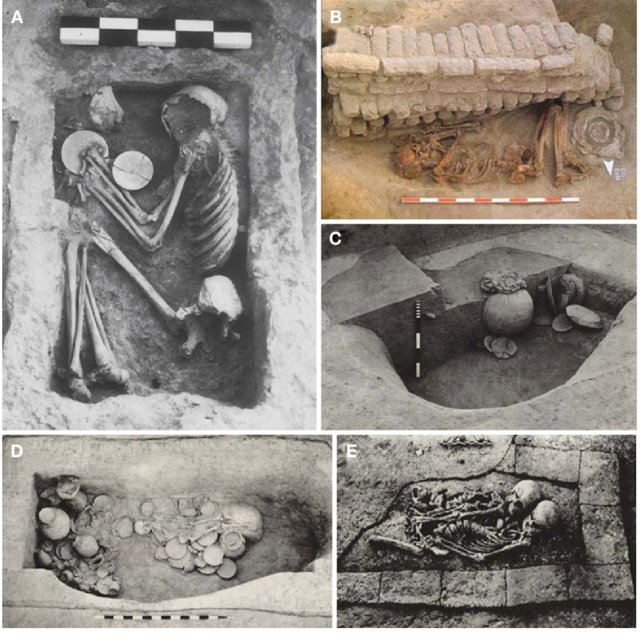
Mehr Ghar is considered to be the oldest village.
And it is believed to be one of the places where the first crop cultivation was started and sheep and goats were also started.
मेहर घर को सबसे पुराना गांव माना जाता है |
और माना जाता है कि उन जगहों में से एक है जहां पर पर सबसे पहले फसल फसल उगाना शुरू किया गया था और भेड़ और बकरियों को पालना भी शुरू किया गया था |
Bones of many animals were found in it, this shows that they used to live and rear and also hunted wild animals.
इसमें बहुत से जानवरों की हड्डियां पाई गई थी इससे यह पता चलता है कि जान और पाला कर देते और जंगली जानवरों का भी शिकार करते थे |

The houses found here were like this as you see in the picture.
यहां पर प्राप्त घर कुछ इस प्रकार के होते थे जैसा आप चित्र में देख रहे हैं |
There used to be four rooms in every house which were used to keep food or grains etc.
हर घर पर चार कमरे हुआ करते थे जो कि समान या अनाज आदि रखने के लिए इस्तेमाल किया जाता था |
 |
please support our efforts, scan to pay/कृपया हमारे प्रयासों का समर्थन करें, भुगतान करने के लिए स्कैन करें|
|



